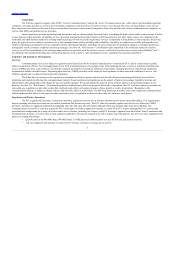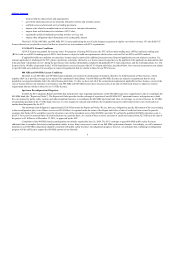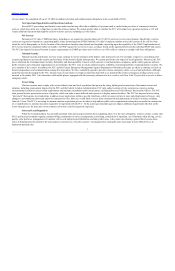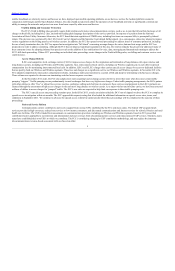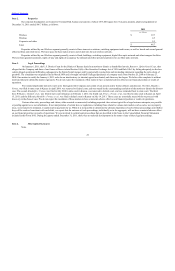Sprint - Nextel 2011 Annual Report Download - page 17
Download and view the complete annual report
Please find page 17 of the 2011 Sprint - Nextel annual report below. You can navigate through the pages in the report by either clicking on the pages listed below, or by using the keyword search tool below to find specific information within the annual report.
Table of Contents
12 to 24 months. Equipment cost in excess of the revenue generated from equipment sales is referred to in the industry as equipment net subsidy and is generally
recognized when title of the device passes to the dealer or end-user subscriber. The cost of multi-functional devices, such as smartphones, including the iPhone, has
increased significantly in recent years as a result of enhanced capabilities and functionality. At the same time, wireless service providers continue to compete on the basis
of price, including the price of devices offered to subscribers, which has resulted in increased equipment net subsidy. We have entered into a purchase commitment with
Apple, Inc. that increases the average equipment net subsidy for postpaid devices resulting in a reduction to consolidated results from operations and reduced cash flow
from operations associated with initiation of service for these devices until such time that retail service revenues associated with customers acquiring these devices
exceeds such costs.
We expect to incur expenses to attract new subscribers, improve subscriber retention and reduce churn, but there can be no assurance that our efforts will result
in new subscribers or a lower rate of subscriber churn. Subscriber losses and a high rate of churn adversely affect our business, financial condition and results of
operations because they result in lost revenues and cash flow. Although attracting new subscribers and retention of existing subscribers are important to the financial
viability of our business, there is an added focus on retention because the cost of adding a new subscriber is higher than the cost associated with retention of an existing
subscriber.
A
s the wireless market matures, we must increasin
g
l
y
seek to attract subscribers
f
rom competitors and
f
ace increased credit risk
f
rom new postpaid wireless
s
ubscribers.
We and our competitors increasingly must seek to attract a greater proportion of new subscribers from each other's existing subscriber bases rather than from
first-time purchasers of wireless services. Beginning in 2008 through 2011, we experienced decreases in our total retail postpaid subscriber base of approximately 8.6
million subscribers (excluding the impact of our 2009 acquisitions), while our two largest competitors increased their subscribers over the same period.
In addition, the higher market penetration also means that subscribers purchasing postpaid wireless services for the first time, on average, have lower credit
scores than existing wireless subscribers, and the number of these subscribers we are willing to accept is dependent on our credit policies, which are less stringent than our
investment grade competitors. To the extent we cannot compete effectively for new subscribers or if they are not creditworthy, our revenues and results of operations will
be adversely affected.
Competition and technological changes in the market for wireless services could negatively affect our average revenue per subscriber, subscriber churn, operating
costs and our ability to attract new subscribers, resulting in adverse effects on our revenues, future cash flows, growth and profitability.
We compete with a number of other wireless service providers in each of the markets in which we provide wireless services, and we expect competition may
increase if additional spectrum is made available for commercial wireless services and as new technologies are developed and launched. As competition among wireless
communications providers has increased, we have created certain unlimited pricing plans that may result in increased usage of data on our network. Competition in
pricing and service and product offerings may also adversely impact subscriber retention and our ability to attract new subscribers, with adverse effects on our results of
operations. A decline in the average revenue per subscriber coupled with a decline in the number of subscribers would negatively impact our revenues, future cash flows,
growth and overall profitability, which, in turn, could impact our ability to meet our financial obligations.
The wireless communications industry is experiencing significant technological change, including improvements in the capacity and quality of digital
technology and the deployment of unlicensed spectrum devices. This change causes uncertainty about future subscriber demand for our wireless services and the prices
that we will be able to charge for these services. Spending by our competitors on new wireless services and network improvements could enable our competitors to obtain
a competitive advantage with new technologies or enhancements that we do not offer. Rapid change in technology may lead to the development of wireless
communications technologies, products or alternative services that are superior to our technologies, products, or services or that consumers prefer over ours. If we are
unable to meet future advances in competing technologies on a timely basis, or at an acceptable cost, we may not be able to compete effectively and could lose subscribers
to our competitors.
Some competitors and new entrants may be able to offer subscribers network features or products and services not offered by us, coverage in areas not served
by our wireless networks or pricing plans that are lower than
15


